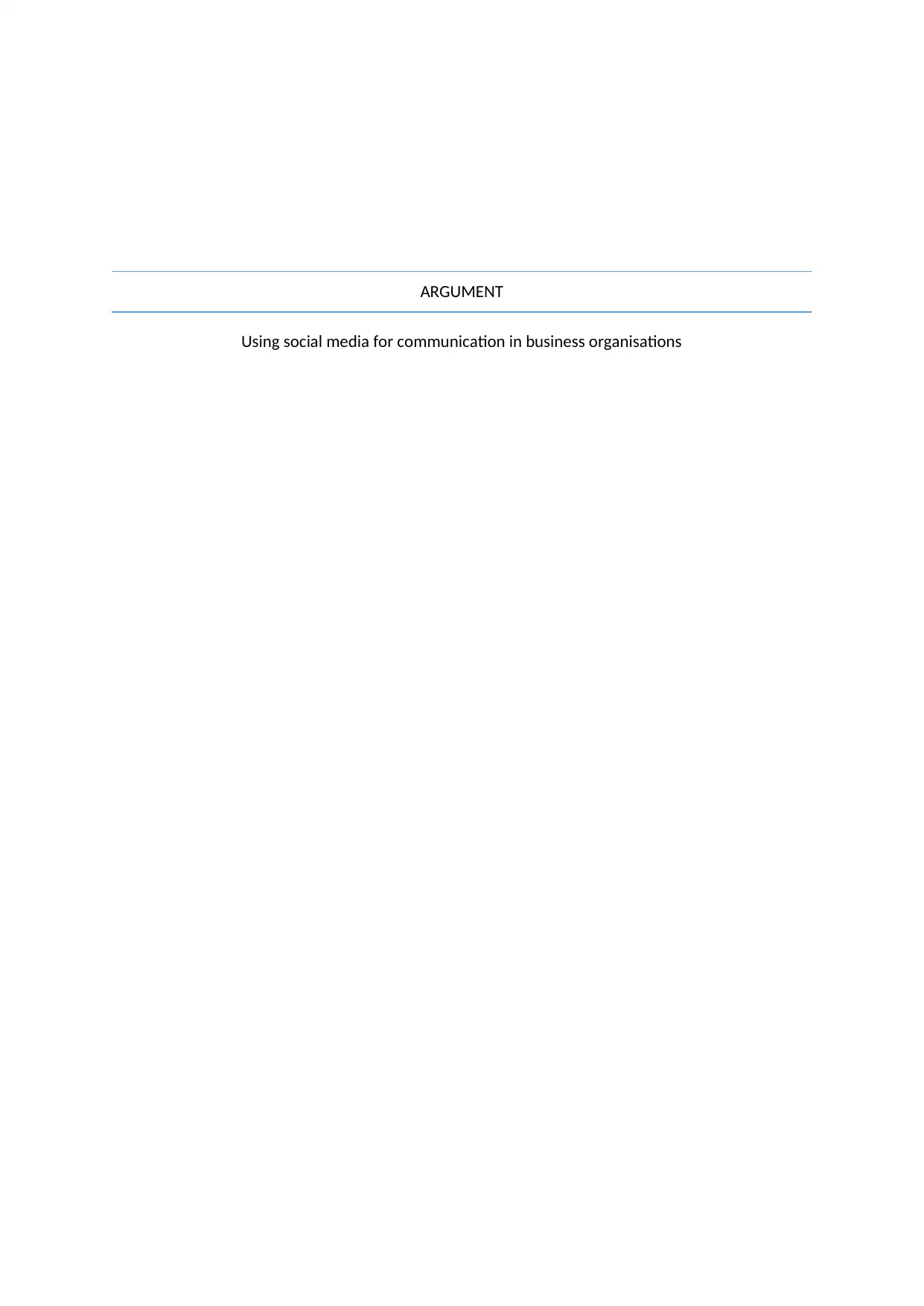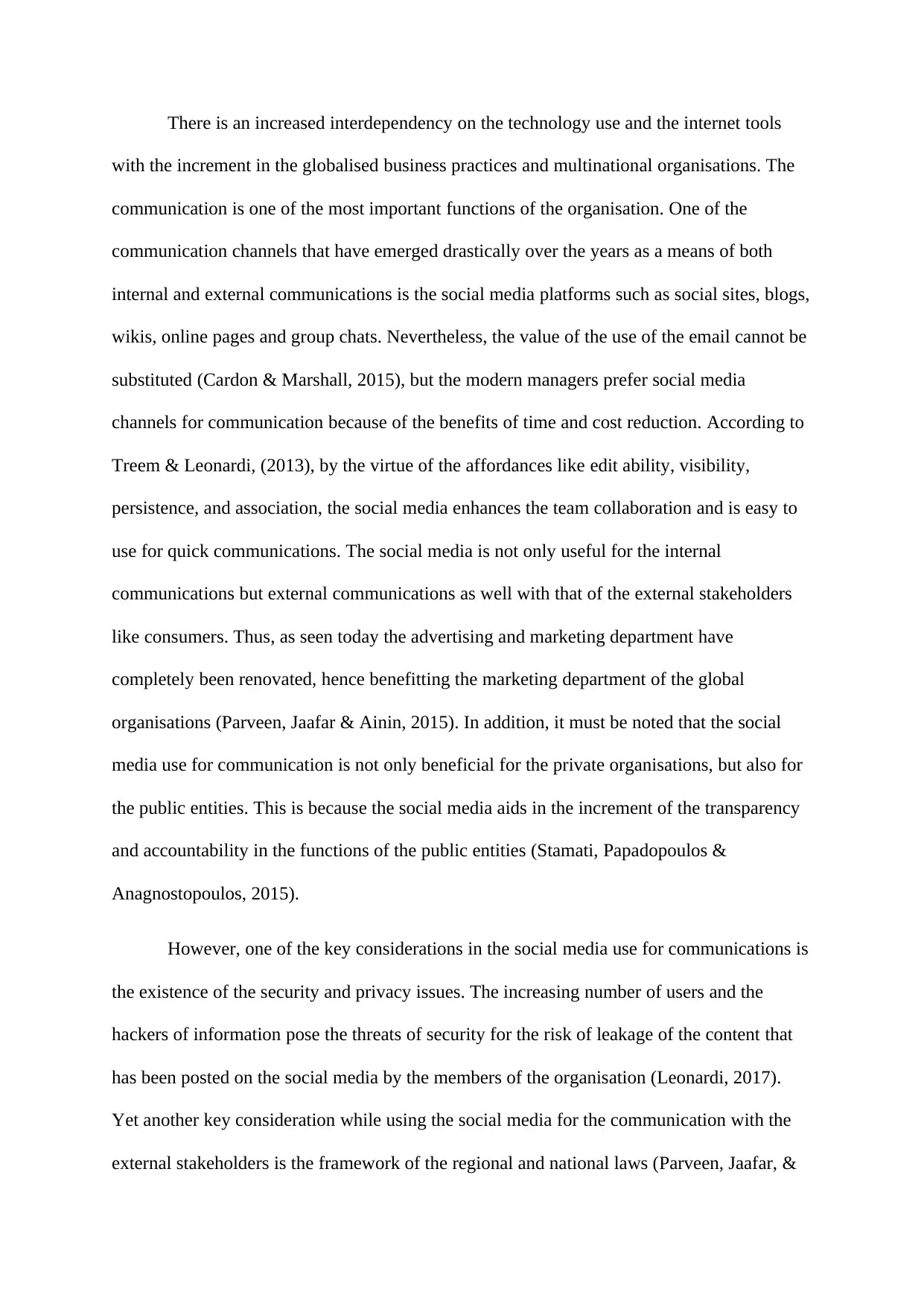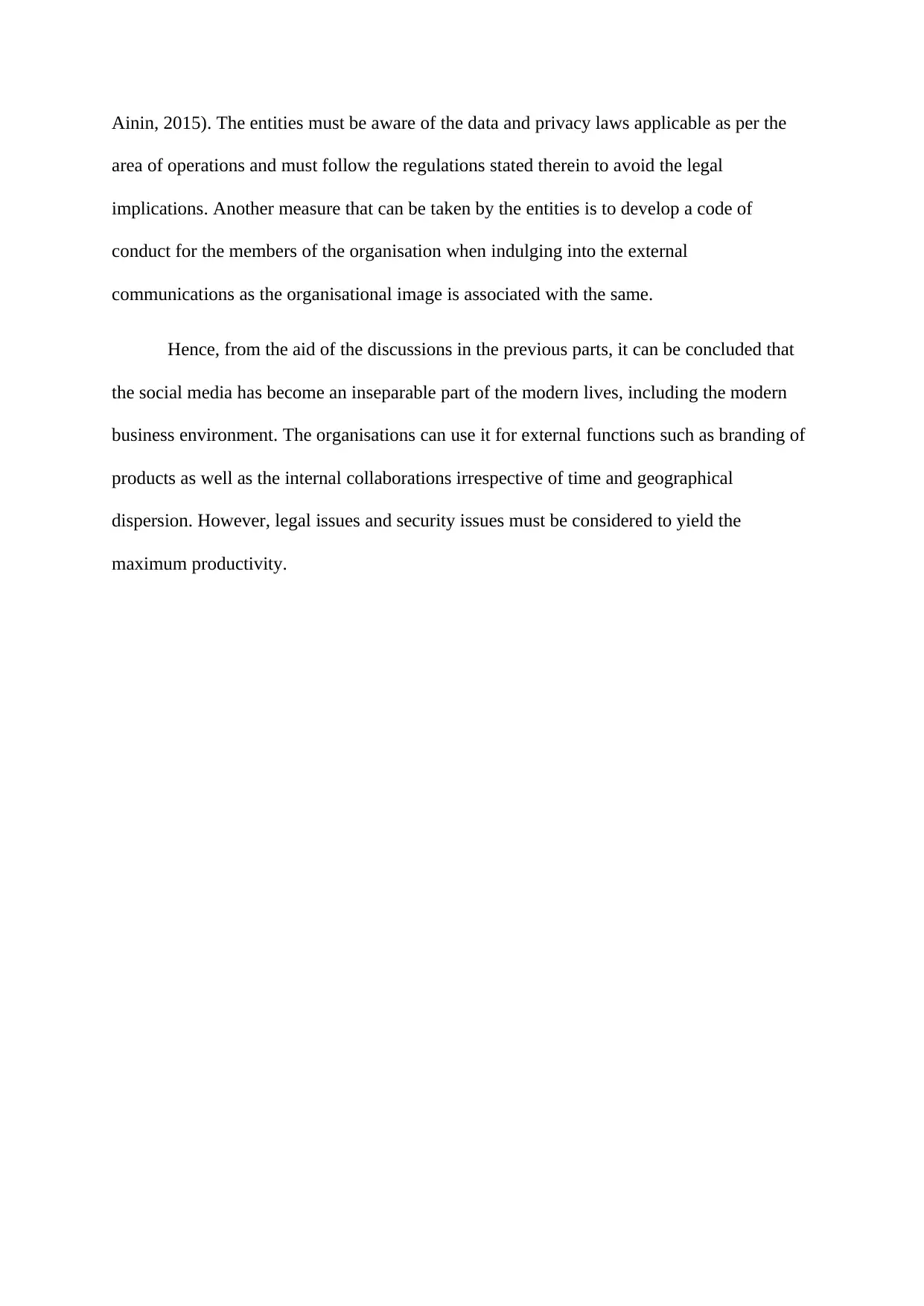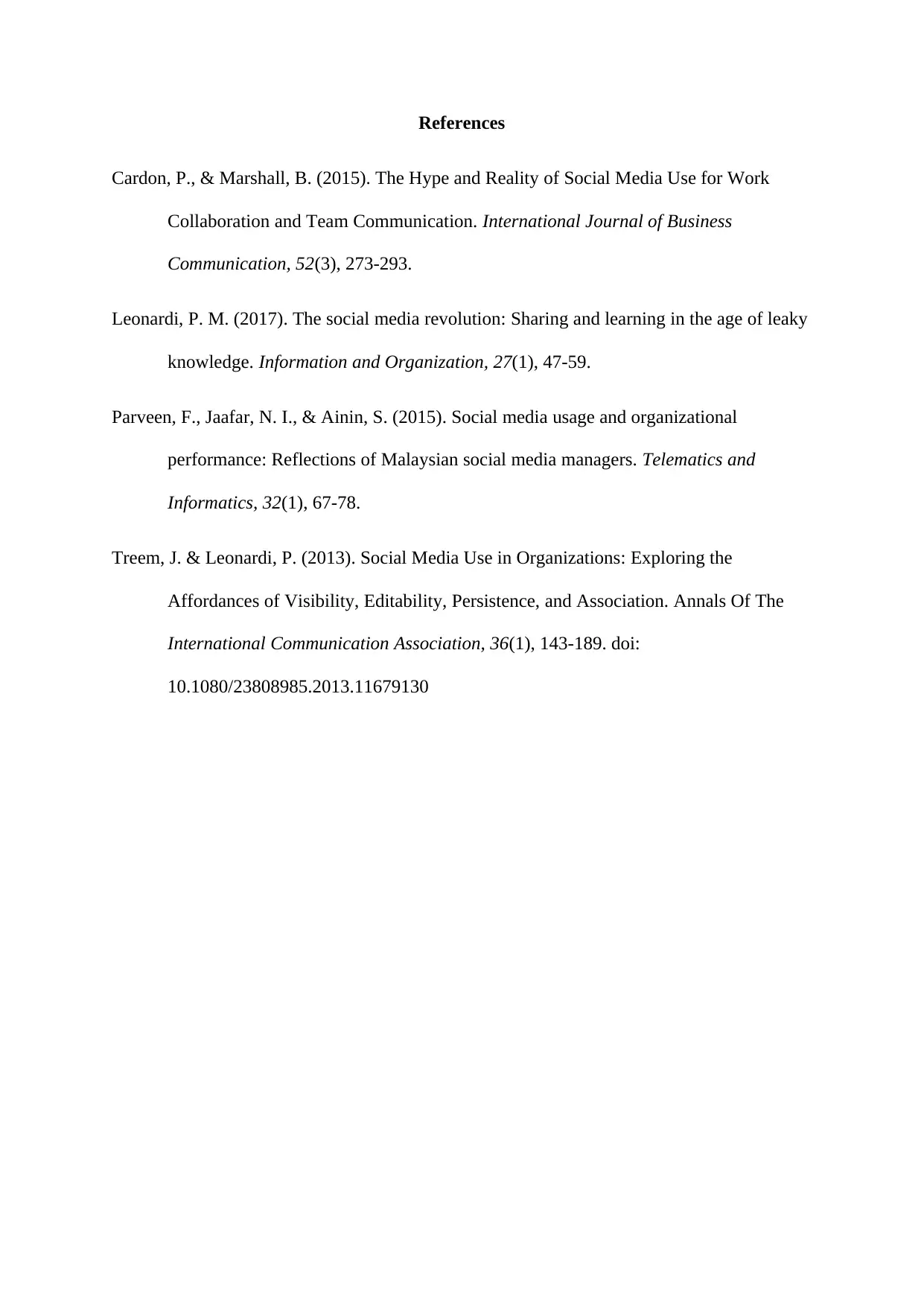Argument on Social Media Use in Business Organisations: MGT502
VerifiedAdded on 2022/10/06
|4
|710
|26
Report
AI Summary
This report provides an argument on the use of social media for communication within business organizations. It highlights the increasing reliance on technology and the internet in globalized business practices, emphasizing social media platforms as crucial communication channels for both internal and external stakeholders. The report acknowledges the enduring value of email while emphasizing the preference for social media due to time and cost efficiencies. It discusses the benefits of social media, such as enhanced team collaboration and ease of use, particularly in marketing and advertising. The report also addresses key considerations like security and privacy issues, as well as the importance of adhering to regional and national laws. It concludes that while social media has become an essential part of modern business, legal and security aspects must be carefully managed to maximize its productivity. The report includes references to relevant academic sources supporting the arguments.
1 out of 4









![[object Object]](/_next/static/media/star-bottom.7253800d.svg)